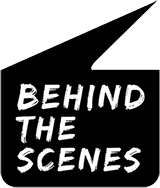Effective communication is all about delivering the right message, at the right time and through the right channel or medium…but how do you choose the right channel?
Especially when there are countless communication channels for you to choose from!
Because you’re team members are all unique and will have different communication preferences, the best leadership communication plans tend to adopt a healthy mix of formal and informal, online and offline, one-way and two-way channels.
Formal Channels
Formal communication channels are planned, structured and measurable. They range from annual Kick Off Meeting, to Quarterly Town Halls, Monthly Newsletters, Fortnightly 1-2-1 meetings, Weekly WIPs and Daily Huddles. They are a consistent feature in the calendar of both a leader and their employees.
Informal Channels
On the flip side, you have informal communication channels. Things like the water cooler conversations, catching up with someone in the corridor, the coffee break banter, text messages, instant messenger, a quick phone call or popping by someone’s desk. Informal channels are unplanned, unstructured, and unmeasured. They tend to happen in-between the formal channels.
Online Channels
Online communication channels refer to digital and social channels. For example, a website or intranet, social media, videos and podcasts, blogs, chat rooms, forums, eNewsletters, emails and something we’ve all become much more accustomed to of late: video conferencing!
Offline Channels
Offline channels refer to anything that happens ‘in the real world’ as opposed to the online world. Phone calls, in-person meetings, events and workshops, printed materials like newspapers, magazines, posters, letters and cards, as well as branded merchandise such as t-shirts, pens and keep cups.
One-way Channels
One-way communication is when a leader broadcasts a message to their team. It travels in one direction and offers no opportunity for immediate feedback or response. For example, this video is a one-way communication channel. I’m talking to you, but as you are watching this, I have no indication of what you’re thinking or feeling.
Two-way Channels
Two-way communication channels are much more like conversations. Messages can travel back and forth as both parties take it in turn to speak and listen. This means real-time feedback can be provided helping you understand if the team has been understood accurately.
Which channel to choose?
That depends on a number of different factors:
- Your message and it’s degree of complexity or sensitivity
- Your communication objective and what outcome, reaction or response you’re hoping to achieve
- The context – both environmental and social
- Your level of confidence with a specific channel
- And – most importantly – your team and how they prefer to receive information.
When it comes to choosing the right communication channel, it’s important to remember that one channel will never suit all members of your team equally, so you may need to choose a variety of channels.
Whatever channel/s you choose, communication is only considered successful if the message sent is equal to the message received. So always consider how you can measure the effectiveness of your communication.
